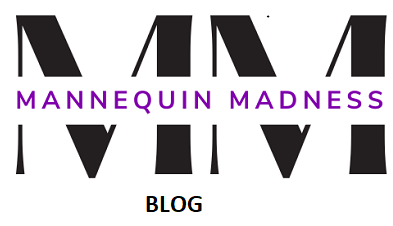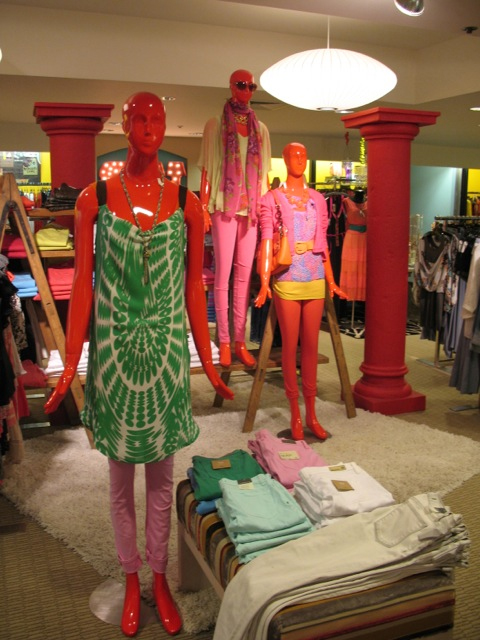
You can turn a “customer passing by” into a “customer who buys” by avoiding these three common mistakes that small retailers and boutique owners often do.
We’ve noticed these mistakes because a large part of our customer base at Mannequin Madness are independent and mid-size clothing retailers who don’t have store planners or visual merchandising teams to rely on. As a result they often do not have the resources to maximize the sales impact of their in store displays.
One of our customers, Halls, a department store in Kansas City (a division of Hallmark) sent us photos of their in store displays (with mannequins they purchased from us.) These photos are perfect examples of a retailer who knows how to create stellar in-store displays. Maybe that is why Hall’s has been in business since 1916.
Here are 3 common mistakes:
1 Afraid to use color.
Not using color is the fashion equivalent of “playing it safe” versus “making a statement.” A generic palate in an attempt to please the widest possible customer base isn’t effective unless you are a big box retailer. The good news is that when your store has a clearly defined point of view or personality it enables you to attract those customers who clearly “get who you are”. And it is these customers who will be more likely to buy what you are offering.
This display at Halls uses bright colors liberally – on the walls, on the mannequins and with props. All of which helps to draw your attention. Color sets the mood and tone of an environment.
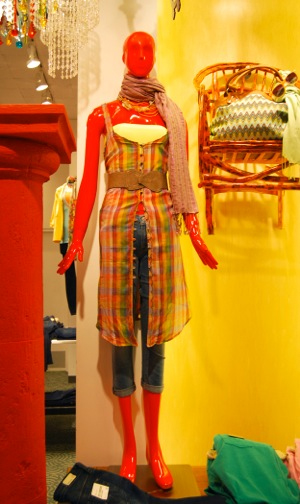
I have never been inside this store but I would guess by looking at the display that the customer they want to attract to this department is a young person – perhaps high school age to mid-20’s, who likes trendy clothing.
If they were trying to reach a different demographic or sold a different style of clothing, a different color palate would be chosen. This is how color helps to define a brand or a mood. Color can also be used to define different shopping areas within your store . If for example you sell clothes for different age groups or sell both male and female clothing, you can color to identify each section
2 Lack of Signage
While the inside of a store shouldn’t be littered with signs like on an interstate highway, the right signage can create subliminal messages that remind your customer why they are shopping here. Look at this in store signage at Halls:
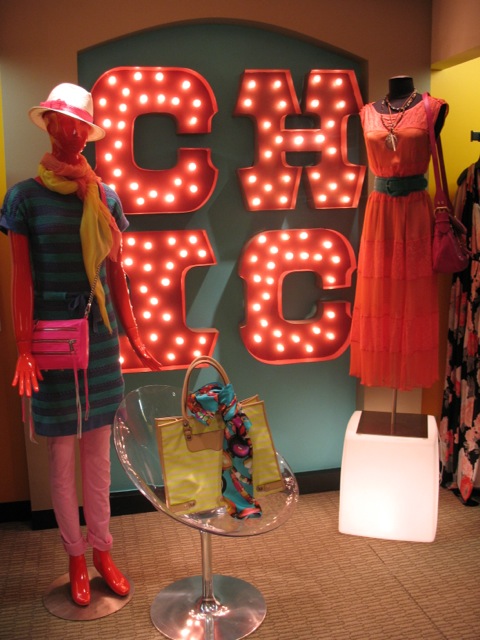
The word chic is an adjective that would appeal to their customer. And the font and color used to spell out the word is consistent with the personality of this department. If they were selling evening gowns in this department, the word chic would be spelled out completely different.
Signage acts like a lighthouse to guide people. This is an effective way to use the wall space – put an eye-catching sign or photo there. Signs and signage are also known as visual cues that direct your customers to roam around your store, which often results to unplanned purchases.
Think of the type of words or phrases that describe your customer or your products. Strategically placing signage around the store with these words and help to remind your customer what your store represents.
3 Not using the vertical space
By placing items at different levels it accomplishes two things. First it provides different focal points to catch the eye. This display of clothing stands out a lot more because the mannequins are at different heights. (use pedestals to accomplish this).
If all the mannequins were standing together in a row of the same height, everything would blend together as one unit. Now you see three different things.
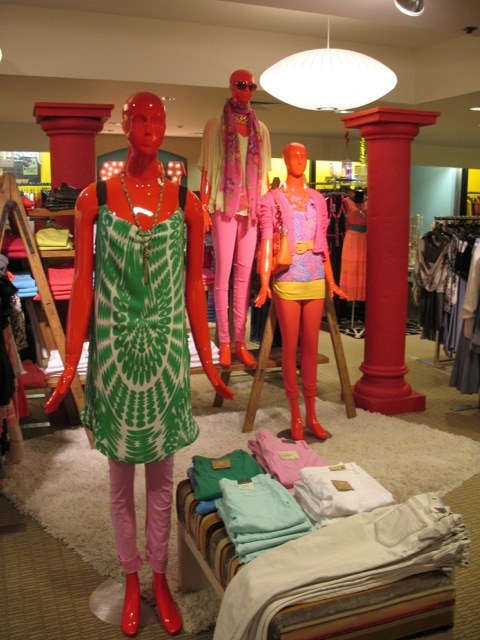
Secondly using vertical space allows you to put more items within a small space. Notice the 3 rows of open shelving below. There are a lot of shirts there, but still there is plenty of “air space” so it doesn’t look cluttered.
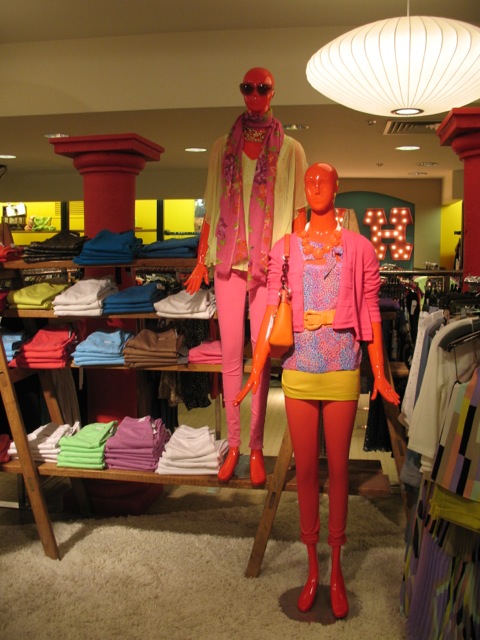
For more visual merchandising tips, buy our upcoming Ebook – From So What? to Sensational – creating displays that sell. The first 50 copies will be free to those who send an email asking for the early bird offer.
